Have You Ever Seen a Nursery Like This?
Machinery, baby Christmas trees, and a working countryside
Back in late October, my wife and I stayed in an Airbnb cabin in Gordonsville, Virginia, about half an hour northeast of Charlottesville. This was our cabin, a new-construction A-frame. I show my wife too many pictures of retro buildings, and I especially like A-frames. She knew I would like this, and I sure did.
On our way back, we stopped at a nearby place called The Market at Grelen. The property includes a wedding venue, a small store with home goods, and a sandwich and ice cream counter. The ice cream was homemade and fantastic. The store was a little pricey, as you’d expect, and it was too early for lunch.
But the real attraction here is the property’s 1,000-acre tree nursery, through which several miles of free walking paths are carved. It’s stunning, and it’s an unusual way to get up close to a sort of establishment where the nuts and bolts of the business are hidden—unless you’re there specifically to shop—usually deep in a lot with narrow highway frontage.
For example, this is a major nursery in the Fairfax, Virginia area, and it’s pretty typical of nurseries in more densely populated areas. Nurseries and garden centers are one of the first types of businesses to sell as development edges out. I’m somewhat surprised this one has survived, but it’s quite popular around here.
Here, in contrast, is the entire Grelen property:
All those field-like areas are trees growing, and the gravel yard and machinery yard are just a tiny piece of the land here. Just savor some more photos taken from the trails, including a walk through the machinery yard where I saw this tree-hole digger that looks just like a GI Joe toy missile launcher!
I loved seeing these baby Christmas trees:
More:
What a place for a picnic!
My wife spotted a few beautiful trees, including a gingko, a red Japanese maple, and a wisteria, that she’d like one day. I told her any paid subscriptions I earn from this post will go to our tree fund!
I’ve never seen a nursery like this, being used to the suburban variety described above. This is the sort of land use that indicates a real, working countryside. Once you’re vying with developers, labor-heavy, land-intensive, relatively low-margin businesses no longer easily pencil out. (The same goes for small amusement parks, drive-in theaters, mini-golf courses, etc.) As well as small farms, of course.
Now I don’t intend this as an argument against development or building things. Rather, it’s an argument for building where we’ve already built. I’ve made that argument before in different contexts: here and here, for example.
It’s counterintuitive to some people, but the real threat to “open space” is not places that are dense or crowded, but places that are sprawling and spread out. A lot of Northern Virginia once looked like that huge nursery—but huge amounts of land have been developed at very low densities. Let’s go back to the smaller suburban nursery, but with a more zoomed-out view.
Obviously, a lot of people like having a little piece of private land. Yet many of the same people dislike the ever-growing penumbra of sprawl in the region. And pretty much all growing metros see the same pattern. Does that screenshot look like the best use of the land shown?
I’d like raise an alternative arrangement: if you live in the D.C. area or a region like it, would you trade some private, small green space, and maybe even a little bit of privacy, for more coherent, functioning open space and countryside closer to the population center? For more access to nature? If you’ve lived in both a country and an urban setting, how did that change your thinking about any or all of this?
Related Reading:
Please consider upgrading to a paid subscription to help support this newsletter. You’ll get a weekend subscribers-only post, plus full access to the archive of over 200 posts and growing. And you’ll help ensure more material like this!

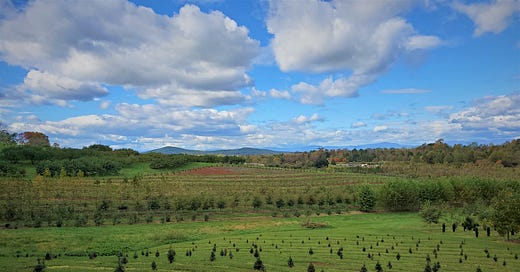



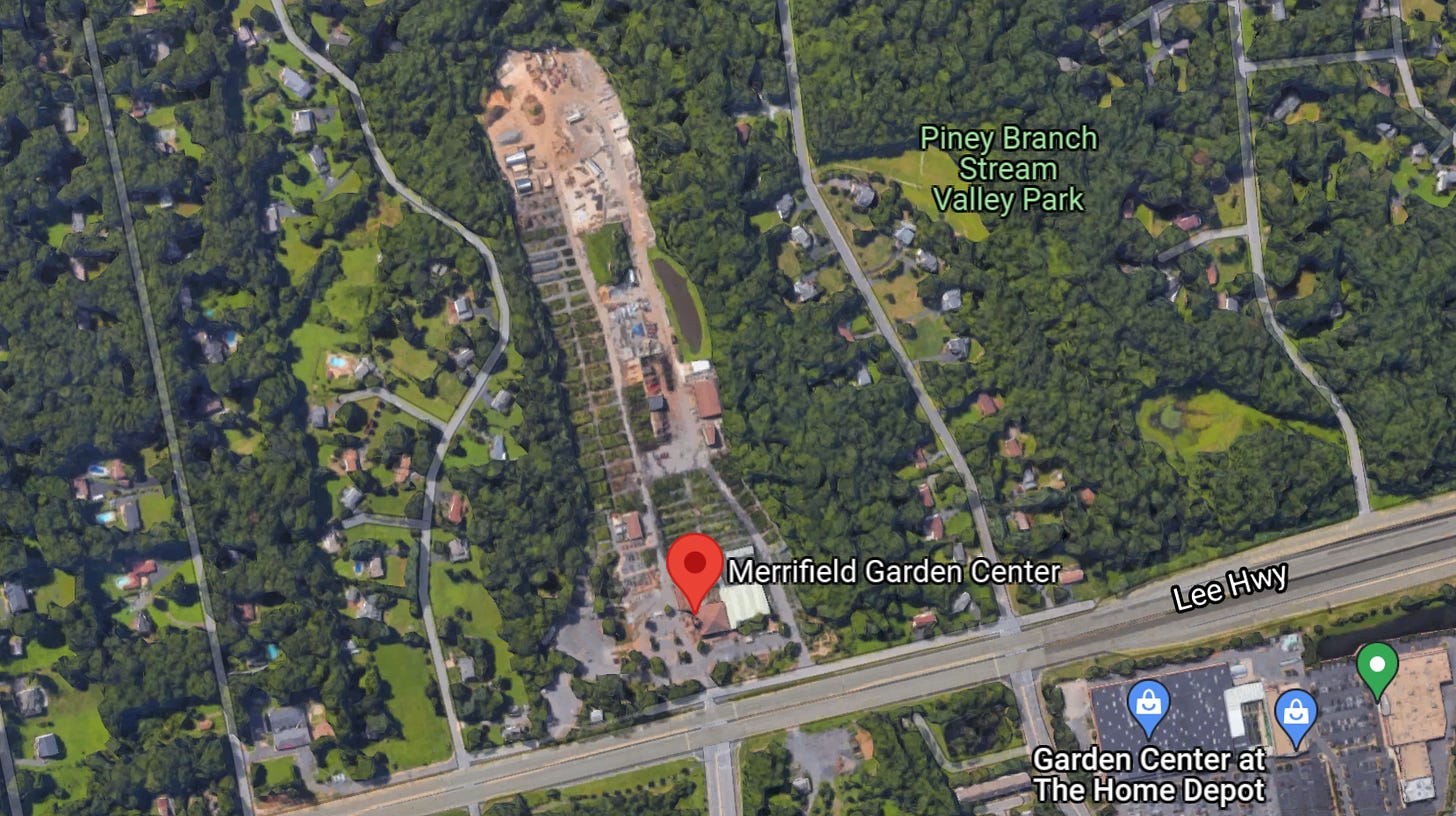
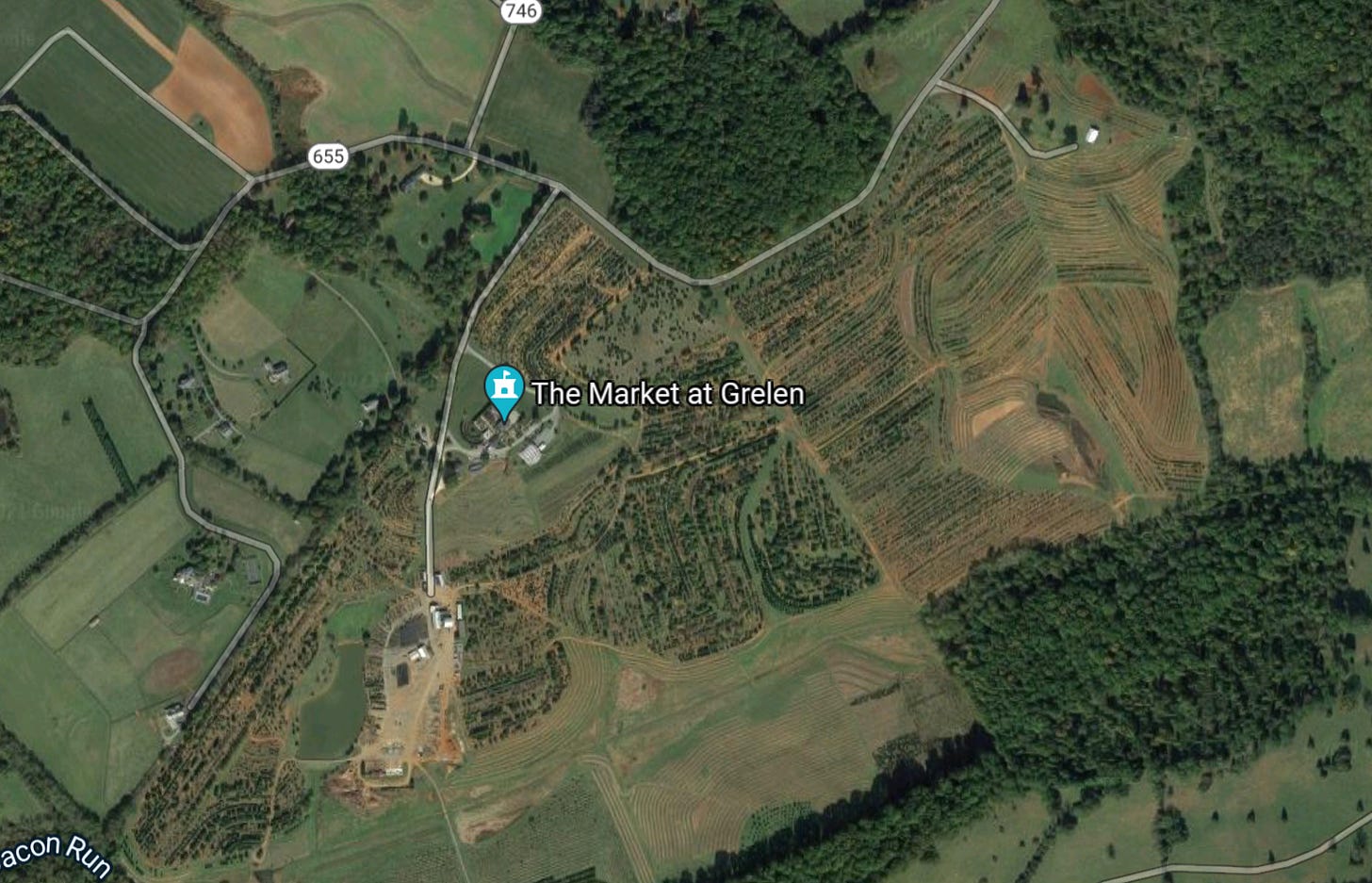
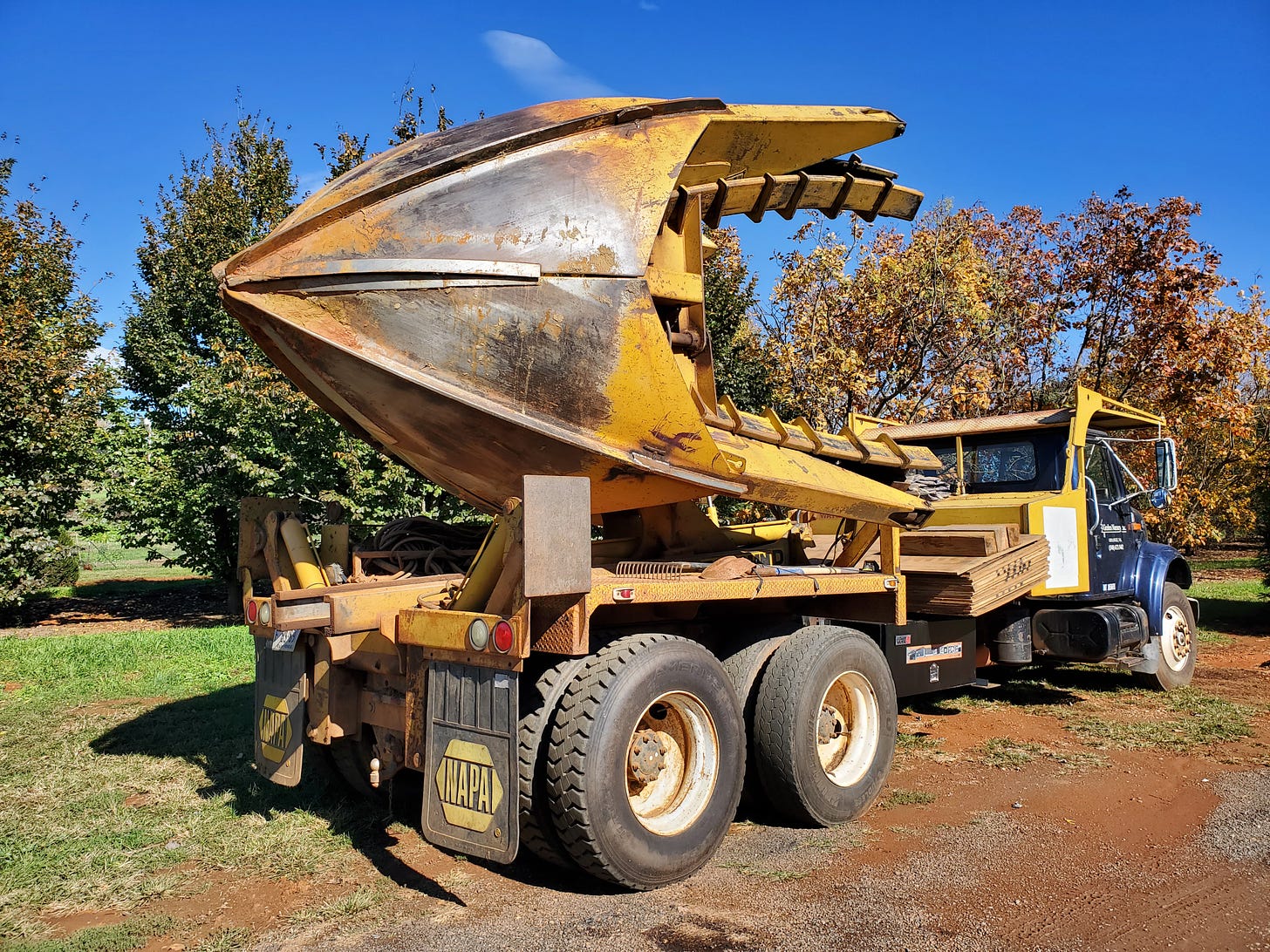

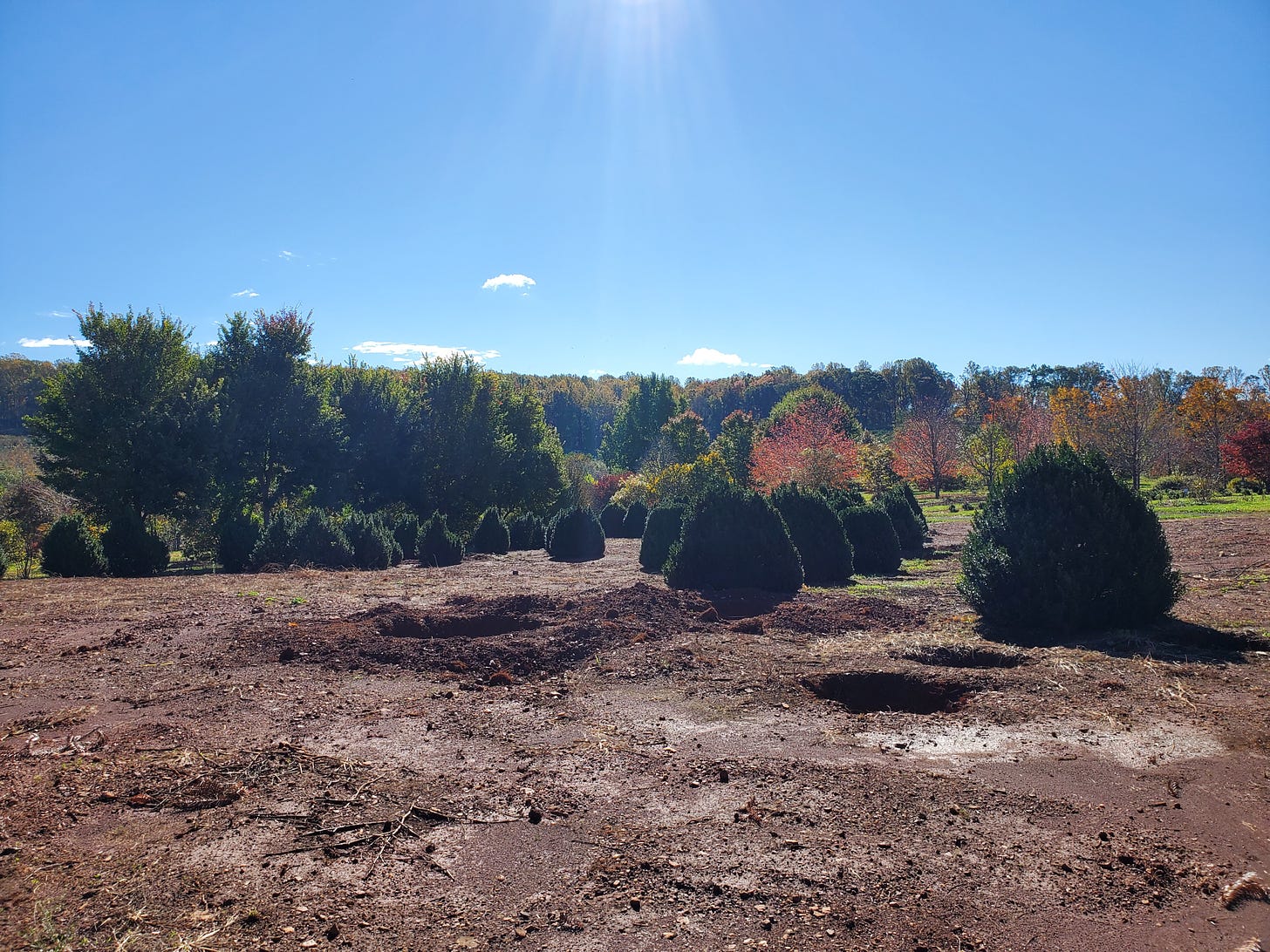




Suburban sprawl is awful. The best setup is found in pre-car places such as old European towns, or Georgetown/Alexandria in the DC area: medium-density rowhouses and 2-3 story apartments. Each residential zone of roughly a quarter mile features a small commercial strip. Several such zones clustered around a larger commercial street/plaza and a train station make up a town, and several 'towns' surrounding still higher-density commercial zones constitute a city.
A place like Tysons Corner? Ghastly is the only way to describe it. But they toss up blocks of overpriced condos between the highway flyovers and parking garages, and people evidently buy them. Even by the standards of our insane society, one of the great mysteries to me is why everyone knows what a "nice neighborhood" looks and feels like in terms of architecture and urbanism, but nobody can manage to actually build a new one.
I lived for 24 years in Reston, Virginia -- the "new town" where the whole idea was to "trade some private, small green space, and maybe even a little bit of privacy, for more coherent, functioning open space and countryside closer to the population center." We didn't have to trade ALL our private, small green space, but private yards were small and common space, untouched trees, and paths through the woods were pervasive. It was good for my family, good for the community, and good for the soul. Areas of Reston have, as planned, subsequently given way to commercial development, but most of its residential greenery thankfully remains intact.